Saqqara: Your Ultimate Guide for an Unforgettable Trip!
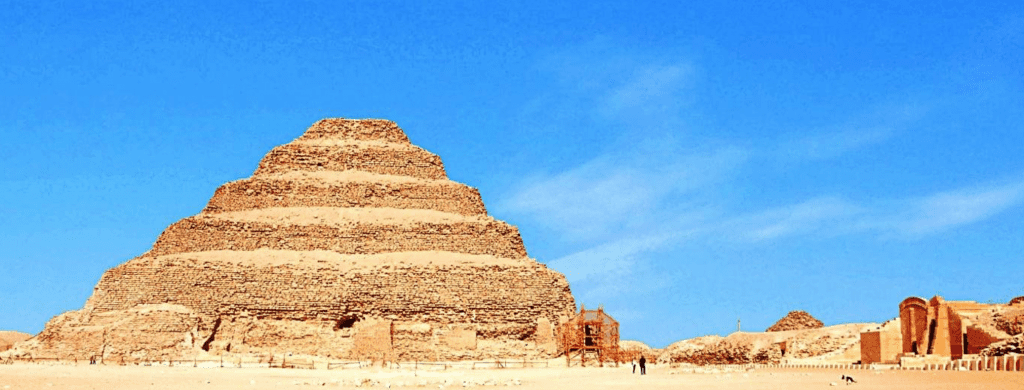
Updated On: April 18, 2024 by Ciaran Connolly
Welcome, travellers, to the land of Pharaohs, where time seems to have stood still. Egypt, a country steeped in history, is home to many world-renowned archaeological sites, but none quite like Saqqara.
This ancient burial ground, less frequented by tourists yet every bit as fascinating as the famed Giza plateau, beckons with the allure of undiscovered treasures and forgotten tales.
Saqqara is not just a destination but a journey back in time. With every step on its sun-drenched sands, you’re walking the same path as ancient Egyptians, witnessing the magnificence of their civilisation and the reverence they held for the afterlife.
From the inspiring Step Pyramid of Djoser to the mystifying Serapeum, Saqqara is a testament to the grandeur and complexity of ancient Egyptian society.
So, pack your bags, don your explorer’s hat, and prepare to delve into the captivating chronicles of Saqqara. This is a voyage of discovery you won’t soon forget.
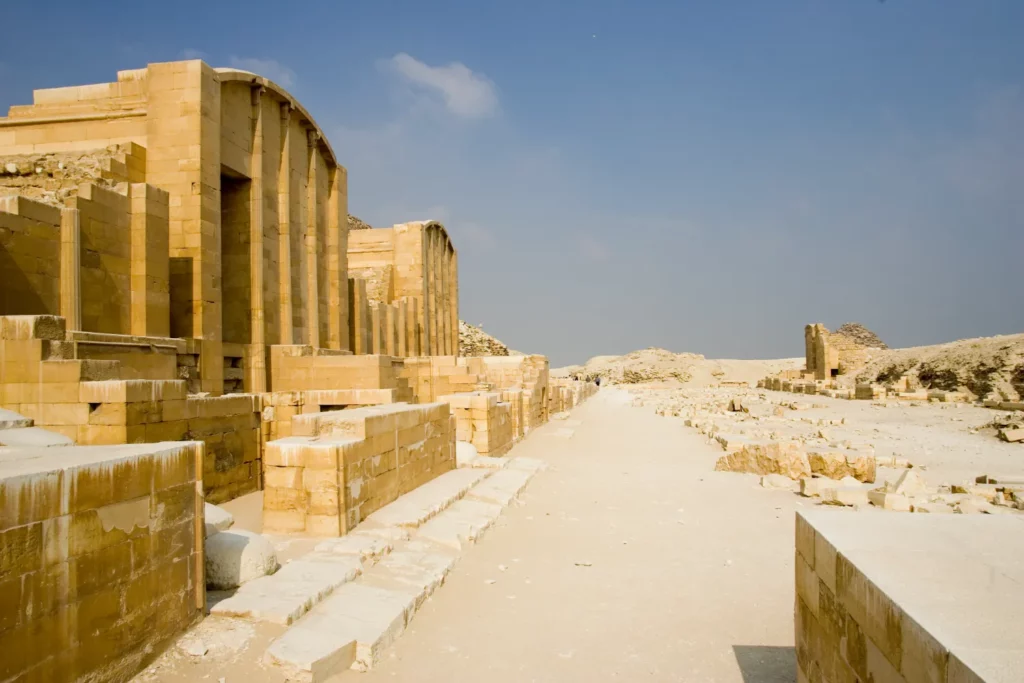
How to Get to Saqqara
Saqqara is located about 30 kilometres south of Cairo, the capital of Egypt. Taxis and ride-hailing services like Uber are widely available in Cairo. You can simply set Saqqara as your destination; the journey will take about an hour. Always agree on the fare before starting the journey if you’re taking a taxi.
Many tour operators in Cairo offer day trips to Saqqara. These typically include transportation, a guide, and sometimes a meal. This can be an appropriate option as it takes the stress out of navigating and allows you to focus on enjoying the site.
While it’s possible to reach Saqqara using public transportation, it’s generally not recommended for tourists due to its complexity and the potential language barrier.
In terms of time needed for exploring Saqqara, it largely depends on your pace and level of interest; however, allow at least half a day. Saqqara is a large site, home to numerous tombs and monuments, including the Step Pyramid of Djoser, one of the earliest colossal stone buildings and the earliest colossal stone tomb.
If you’re really interested in ancient Egyptian history and want to explore the site thoroughly, you might want to consider spending an entire day there. Remember that Saqqara is less touristy than Giza, so you’ll likely be able to explore more leisurely and without large crowds.
The History and Archaeological Significance of Saqqara
Saqqara, an Egyptian village located in the Markaz of Badrashin in the Giza Governorate, is a treasure trove of history and archaeological significance. This necropolis served as the burial grounds for the ancient Egyptian capital, Memphis, and is nestled around 30 kilometres south of modern-day Cairo.

Saqqara boasts the oldest complete stone building complex known in history, the Pyramid of Djoser, constructed during the Third Dynasty.
Another sixteen Egyptian kings also built pyramids at Saqqara, demonstrating the site’s importance over the ages. These pyramids now stand in various states of preservation, silently narrating tales of the past.
The necropolis continued to function as an essential complex for non-royal burials and cult ceremonies for over 3000 years, extending well into the Ptolemaic and Roman times.
Interestingly, the origin of the name ‘Saqqara’ is debated among scholars. While some believe it is derived from the ancient Egyptian funerary deity, Sokar, others argue that it comes from a local Berber tribe called the Beni Saqqar.
As part of the Pyramid Fields of Memphis, Saqqara has been recognised as a World Heritage Site by UNESCO since 1979. This collective heritage site also includes the Abusir Pyramid complex to the north, the Dahshur Pyramid complex to the south, and the Giza Pyramids complex to the far north.
This complex, constructed by the royal architect Imhotep, includes a large number of dummy buildings and a secondary mastaba, known as the ‘Southern Tomb’.
Tombs and Mastabas in Saqqara
Steeped in antiquity, this burial ground hosts mastabas, the earliest form of Egyptian tombs. These ancient edifices, with their rectangular shapes and flat roofs, were crafted from mud-brick or stone; their name was derived from the Arabic word for ‘bench’.
Among the sea of structures, the Mastaba of Ti, belonging to a 5th Dynasty noble, stands out. The walls are adorned with meticulously etched reliefs, revealing glimpses of Ti’s life and the society of his time.
Not far away, the Serapeum, a subterranean tomb complex, contrasts sharply with its granite sarcophagi. These colossal structures were crafted for the Apis bulls, considered sacred in ancient Egypt.

Saqqara’s crown jewel is the Step Pyramid of Djoser, the world’s oldest colossal stone structure. This pyramid, surrounded by a now-ruined complex of chapels and temples, marks a critical point in the evolution of pyramid construction.
Step Pyramid of Djoser: A World heritage site
Emerging from the heart of Saqqara, the Step Pyramid of Djoser stands as an emblem of ancient ingenuity and the birth of monumental stone architecture.
Crafted in the 27th century BC during the Third Dynasty, the pyramid was conceived as the eternal resting place for Pharaoh Djoser. Its construction was overseen by the pharaoh’s esteemed chancellor, Imhotep, who also held the high priesthood of the sun god, Ra.
The Step Pyramid, with its six tiers and four sides, is an architectural marvel for its colossal scale and innovative design. Once standing at a towering height of 62.5 metres with a base measuring 109 by 121 metres, it was humanity’s first large-scale cut stone construction as of 1997. Clad in polished white limestone, the pyramid displayed an unprecedented grandeur.
The pyramid not only marked a departure from the mud-brick monuments of the past but also heralded the dawn of a new era where the royal government exhibited increased control over resources and labour.
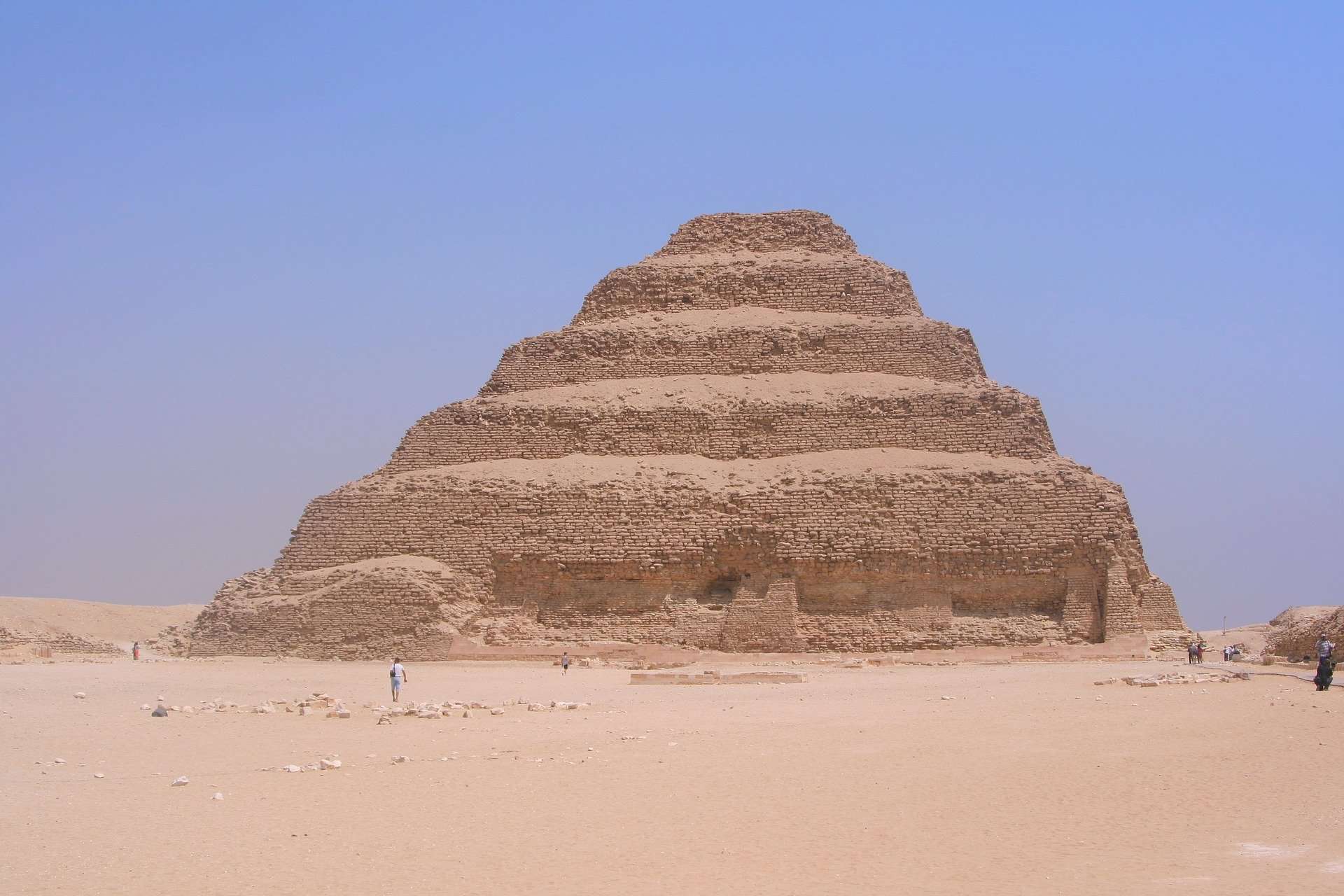
The pyramid’s construction’s magnitude and the required effort reflected a shift in royal burial customs. From this point forward, the pharaohs of the Old Kingdom chose to be interred in the north, moving away from the traditional burial grounds at Abydos.
Intriguing Facts About the Serapeum
The Serapeum of Saqqara is a burial site in Egypt dedicated to the sacred Apis bulls, which were worshipped as manifestations of the god Ptah.
The term “Serapeum” is derived from “Serapis,” a syncretic Hellenistic-Egyptian god that combined aspects of Osiris and Apis in a humanised form, which was popular with the Ptolemaic Greeks in Egypt.
The Serapeum at Saqqara is one of many in Egypt. Still, it is the most famous due to its antiquity and the grandeur of its subterranean galleries.
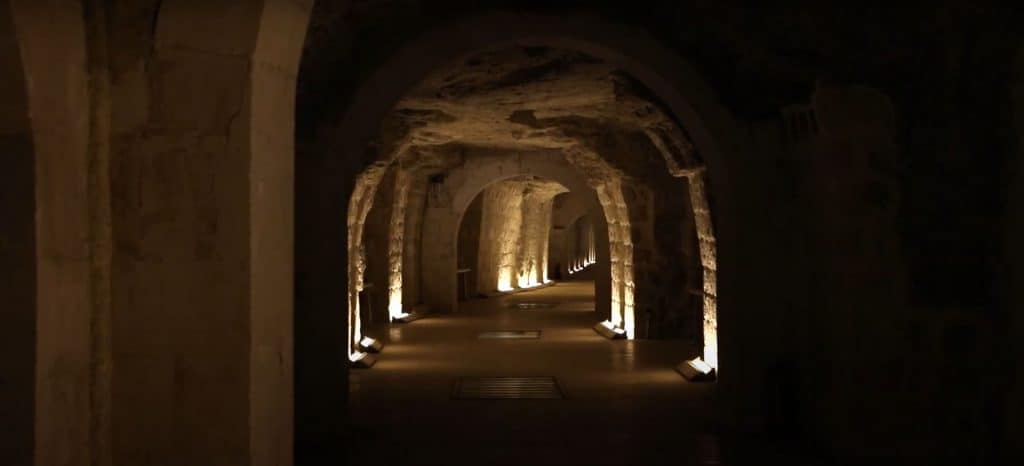
The Enigmatic Pyramid of Unas
The Pyramid of Unas, nestled in Saqqara, Egypt, is an enigmatic monument that stands as a testament to the power and ingenuity of ancient Egypt.
This pyramid was built for Pharaoh Unas, the last king of the Fifth Dynasty in the 24th century BC, and is notable for being the smallest Old Kingdom pyramid. Yet, it’s renowned for the wealth of information it provides due to the discovery of Pyramid Texts in its subterranean chambers.
The pyramid complex is situated between the complexes of Sekhemkhet and Djoser in North Saqqara. It is accessed via a long, elaborately decorated causeway that links the valley temple at a nearby lake to the pyramid site.
Notably, the mortuary temple at the pyramid, featuring a single quartzite column, is associated with the sun cult due to the material’s sun-like colouration.
So, gear up for an unforgettable journey into the past as you step into the Pyramid of Unas, a timeless relic of ancient Egypt!
The Magnificent Imhotep Museum
Unveil Egypt’s captivating history at the Imhotep Museum in Saqqara, dedicated to the genius architect of the Step Pyramid, Imhotep.
Displaying an impressive array of artefacts, this museum is home to an original statue of Djoser, the pharaoh for whom Imhotep built the pyramid, alongside a wealth of ancient medical instruments, reflecting Imhotep’s diverse talents.
The museum pièce de résistance is undoubtedly the captivating relief of the Heb-Sed festival, an intriguing royal ritual. The museum also hosts a vast collection of mummified ibises and baboons, offering a unique insight into the religious practices of ancient Egyptians.
Mastaba Of Mereruka
Set foot in the ancient world of Egypt and discover the mastaba of Mereruka, an architectural marvel that takes us back to the 6th Dynasty, around 2345-2323 BC.
As the vizier under King Teti, Mereruka had considerable influence and wealth. His flat-roofed, rectangular mastaba with inward-sloping sides is a testament to his powerful status.
Nestled north of the pyramid of Teti in Saqqara, Mereruka’s mastaba is among the largest in the Teti cemetery. It is adorned with some of the most exquisite decorations from the Old Kingdom.
As you step into the monument, you’ll be greeted by an impressive number of rooms – thirty in total – including spaces dedicated to his wife and son. Each room was a venue for the cult performance of the soul of the tomb owner, a testament to the religious beliefs and rituals of the time.
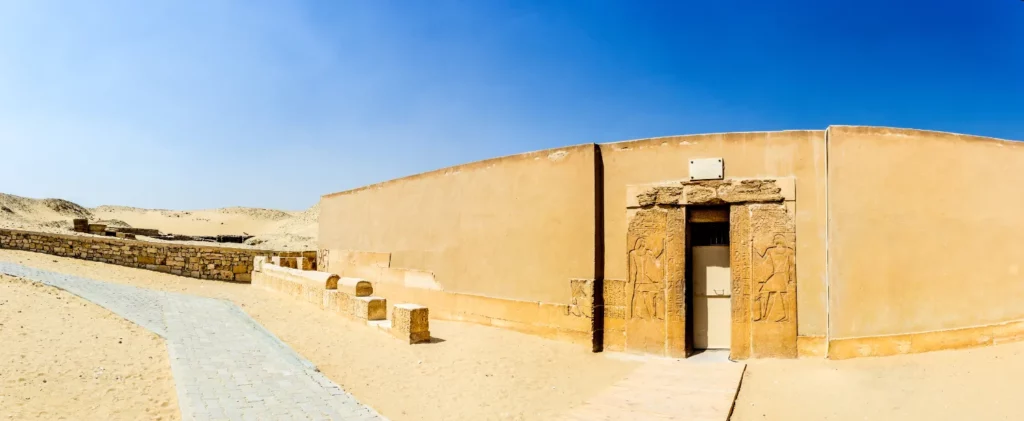
Tomb of Mehu
Journey with me as we descend into the depths of time, crossing a bridge from the present into the ancient world of Egypt. Our destination is the tomb of Mehu, a vizier of the Sixth Dynasty who lived around 2300 BC and held one of the most influential positions at the royal court.
As we step into the past, we traverse Saqqara. This extensive burial ground has cradled the remains of pharaohs and nobles for centuries. Not far away from where we stand lies the Pyramid of Unas, an ancient marvel that has stood the test of time.
The exact time when Mehu lived is disputed, with some scholars dating him to King Teti’s reign and others to King Pepy I’s time.
Yet his legacy remains unchallenged, etched into the stone walls of his monumental mastaba that bear witness to his significant stature. As a vizier, Mehu oversaw the treasuries, the double granary, and all royal works, as well as Upper Egypt.
His titles attest to the immense responsibilities he shouldered, a testament to his pivotal role in ancient Egyptian society.
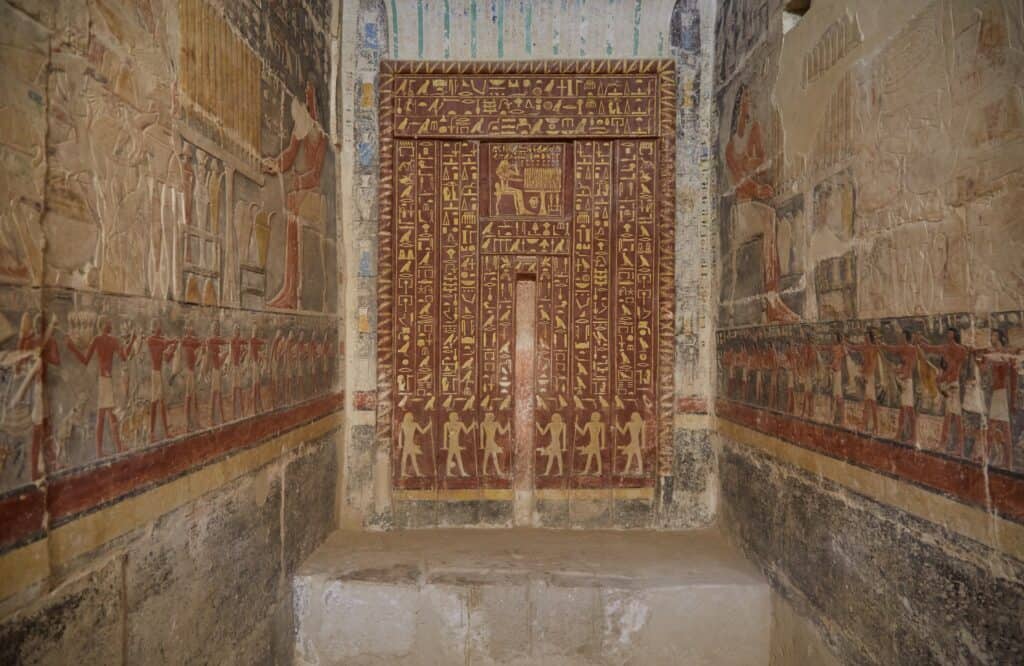
Where to Eat During Your Trip to Saqqara
After a morning of exploring the ancient wonders of Saqqara, you are sure to work up an appetite. Fortunately, there are some great dining options close by.
You can head to Stavolta, 39 Road 231, Degla – Maadi, Cairo if you’re craving Italian cuisine. This restaurant also doubles as a coffee shop. It offers delectable desserts and ice cream, making it a perfect spot for a leisurely lunch or an afternoon treat.
If you prefer a place with a more local vibe, Tabla LUNA, at 41 Road 218, right on the corner of 231, Maadi, Street 218, Al Maadi, is an excellent choice. The restaurant is well-known for its warm ambience and satisfying dishes.
For a luxurious dining experience, consider The Rooftop at the Kempinski Nile Hotel, Corniche El Nil, 12 Ahmed Ragheb Street, 11519, Garden City, Cairo. This Turkish restaurant boasts a stunning rooftop setting, offering diners panoramic city views while they eat.
Sabaya, located at Corniche El Nil, offers a delicious mix of Lebanese, Mediterranean, Middle Eastern, and Egyptian cuisines. It’s an ideal option if you want to sample a variety of flavours from the region.
Lastly, The Grill Restaurant & Lounge at the Semiramis Intercontinental, Garden City, Cairo, is a must-visit for lovers of French cuisine. The restaurant’s sophisticated atmosphere and outstanding food make it a top choice for a memorable lunch.
Remember, each dining experience can add to your overall travel memories, so take your time, savour the food, and enjoy the ambience!
A visit to Saqqara is a trip back in time, a chance to walk in the footsteps of ancient nobles and understand their lives and beliefs about death and the afterlife. Saqqara is a must-visit destination for history enthusiasts and seekers of ancient wisdom. Its dusty plains and monumental structures offer a fascinating insight into the life and practices of ancient Egypt, making it an unmissable stop on any Egyptian itinerary.






